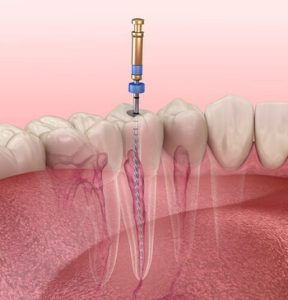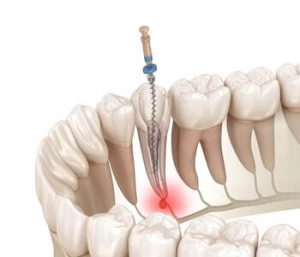
Root canal treatment has a reputation for being intimidating, but the reality is often far less dramatic than the myths suggest. Understanding what happens before and after the procedure can help you prepare, feel confident, and recover smoothly. Whether you are dealing with an infected pulp, deep tooth decay, or a cracked tooth, knowing the steps and results of a root canal can make all the difference in your dental journey.
Understanding What a Root Canal Is
A root canal is a dental procedure designed to save a tooth that has been damaged by infection, decay, or injury. The process focuses on removing the infected pulp, cleaning and shaping the root canal system, and sealing it to prevent further damage. By treating the nerve inside the tooth, root canal therapy allows you to preserve your natural tooth instead of needing an extraction.
Most root canals are performed to treat issues like deep cavities, recurrent decay, or a tooth that has died due to trauma. The main goal is to protect dental health and restore proper oral function.
Before Your Root Canal – Preparing for the Procedure
Signs You Might Need a Root Canal
 Some patients first notice they need a root canal when they begin experiencing severe pain, lingering sensitivity, or swelling around the gums. Common indicators include:
Some patients first notice they need a root canal when they begin experiencing severe pain, lingering sensitivity, or swelling around the gums. Common indicators include:
- Pain when biting or chewing
- Swollen gums or a small pimple-like bump on the gum
- Tooth discoloration
- Increased sensitivity to hot or cold
- Deep tooth decay visible on x-rays
If you are experiencing severe pain or notice changes in your dental health, regular dental checkups can catch these problems early.
Diagnostic Steps and Planning
Before starting, your dentist will examine your teeth and gums, take x-rays, and identify the root canal system’s shape and the extent of infection. In some cases, calcified canals can make the procedure more complex, requiring additional precision.
During the initial consultation, the dentist will explain the root canal procedure, answer your questions, and discuss therapy options, including whether you may need a dental crown after treatment.
What Happens During a Root Canal Procedure
Step 1 – Numbing the Tooth
Local anesthesia is applied to ensure you are comfortable. A rubber dam is placed to isolate the tooth and keep the area clean.
Step 2 – Accessing the Canal
The dentist creates a small hole in the tooth to reach the infected pulp. This opening allows access to the nerve inside the tooth.
Step 3 – Cleaning and Shaping
Using fine dental instruments, the dentist removes the infected tissue, bacteria, and debris from the canal. This stage also shapes the canal so it can be properly filled.
Step 4 – Filling and Sealing
Once cleaned, the root canal is filled with a biocompatible material and sealed to prevent reinfection. In some cases, a dental filling is placed the same day, while in others, a temporary filling is used until the final restoration.
Immediately After – The First Few Days of Recovery
Common Sensations and What to Expect
Most patients experience mild discomfort or mild soreness for a few days after treatment. This is a normal part of root canal recovery and can be managed with over-the-counter pain relief. You may also have some lingering sensitivity, especially when chewing.
The treated tooth might feel slightly different from other teeth during the recovery period, but this sensation typically fades.
Eating After a Root Canal
To support healing and avoid further damage:
- Stick to soft foods like mashed potatoes, yogurt, or soup for the first day or two
- Avoid hard or sticky foods that could disturb the temporary filling
- Chew on the opposite side of your mouth until the final dental work is complete
Caring for Your Tooth After Treatment
Oral Hygiene During Recovery
Maintaining good oral hygiene is essential for a successful recovery. Continue regular brushing and flossing, but be gentle around the treated area. Warm salt water rinses can help soothe the gums and reduce swelling.
Preventing Further Damage
Your dentist may recommend placing a dental crown on the treated tooth to restore its strength and function. This is especially important if the tooth had deep decay, a large filling, or was a front tooth or molar that endures heavy chewing forces.
Root Canal Before and After – The Visible and Hidden Differences
Before Treatment
Before a root canal, an infected tooth often causes pain, swelling, and an increased risk of tooth loss. The infection can spread, leading to more complex dental work or health complications.
After Treatment
After a successful root canal:
- Pain and infection are resolved
- The tooth is saved, preserving your natural smile
- You can chew comfortably without sensitivity
- Your oral health improves as the infection no longer threatens other teeth or gums
In many cases, most patients are able to return to normal activities in less than a week.
 Potential Challenges and How to Address Them
Potential Challenges and How to Address Them
While root canal procedures have a high success rate, some challenges can arise:
- Persistent discomfort or swelling may indicate residual infection
- A cracked tooth may require additional restorative work
- Rarely, calcified canals or complex anatomy may require follow-up treatment
If you experience pain, swelling, or recurrent decay after treatment, contact your dentist promptly for assessment.
Long-Term Results and Dental Health Benefits
A well-performed root canal can last for many years, especially when supported by a dental crown and consistent oral hygiene. Regular dental checkups will allow your dentist to monitor the treated tooth and ensure there are no signs of reinfection.
By saving a tooth through root canal therapy, you maintain better chewing efficiency, prevent shifting of other teeth, and avoid the bone loss that can occur after extraction.
Tips for a Smooth Recovery
- Follow your dentist’s aftercare instructions closely
- Eat soft foods for the first 24–48 hours
- Avoid chewing on the treated tooth until it has a permanent restoration
- Use warm salt water rinses to reduce swelling
- Keep up with regular brushing, flossing, and dental checkups
The Bottom Line
A root canal before and after shows a clear transformation. Before treatment, you may be dealing with pain, infection, and the risk of losing your tooth. After treatment, you have relief from pain, restored function, and a healthy, preserved natural tooth. With proper care, a root canal can be a long-lasting solution that keeps your smile strong and your oral health in excellent shape.
References:
https://my.clevelandclinic.org/health/treatments/21759-root-canal
https://www.healthline.com/health/how-long-does-a-root-canal-take
https://www.nhs.uk/tests-and-treatments/root-canal-treatment/what-happens/
https://www.aae.org/patients/root-canal-treatment/what-is-a-root-canal/
https://www.medicalnewstoday.com/articles/142780
https://www.healthdirect.gov.au/root-canal-treatment





Recent Comments